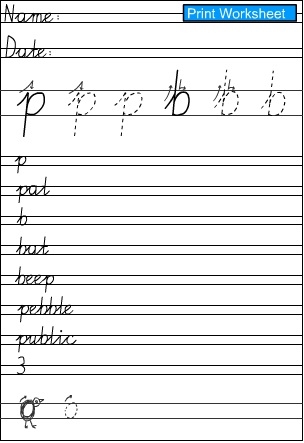Letters b and p: using joins (Letters b and p)
- Grade: Grade 3
Activity type: Printable
To save results or sets tasks for your students you need to be logged in. Join Now, Free
Letters b and p: using joins (Letters b and p)
- Course
English - Grade
Grade 3 - Section
Handwriting - Outcome
Sloped Clockwise Ellipse; b, p, r, n - Activity Type
Printable - Activity ID
4781

